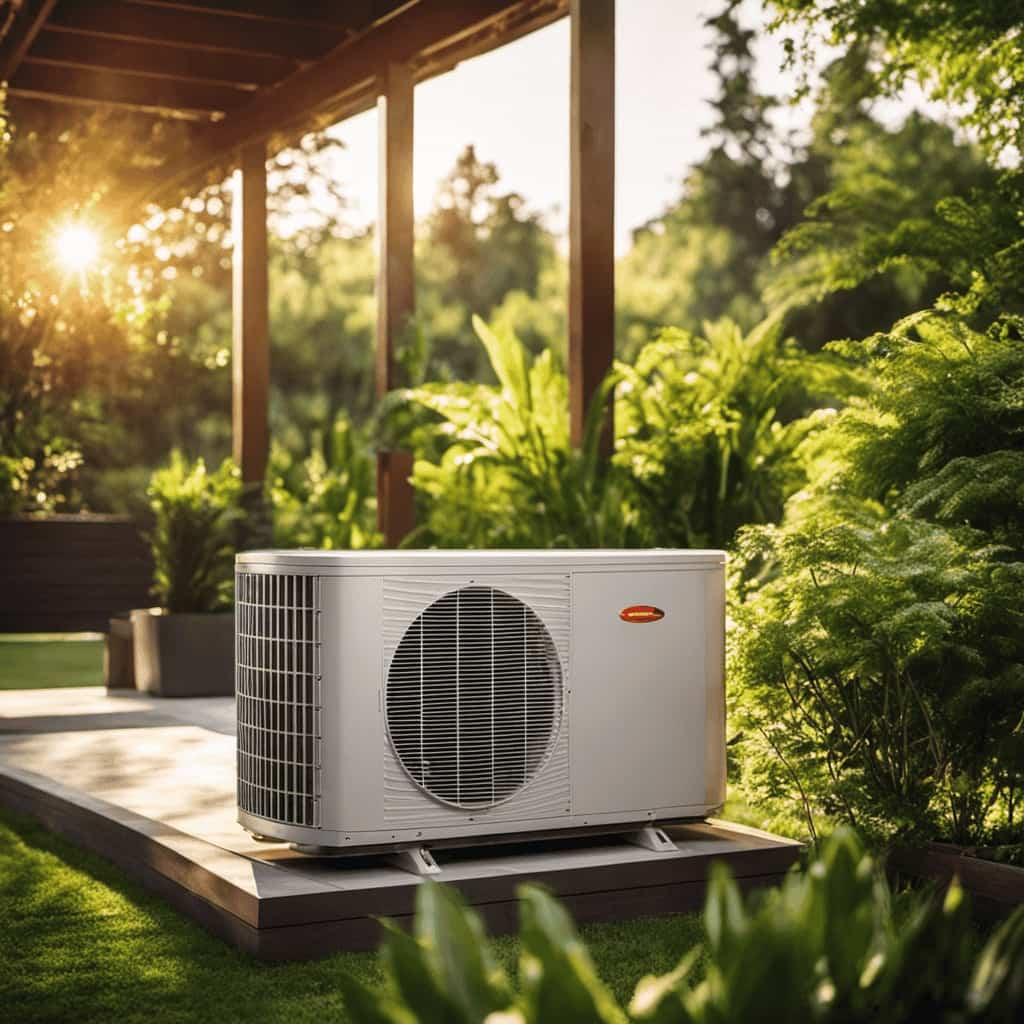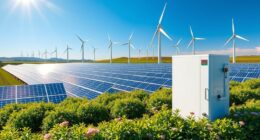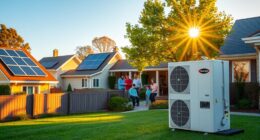We’re all aware of how crucial ongoing upkeep is, aren’t we?
Well, did you know that neglecting your geothermal heat pump can lead to a 25% decrease in efficiency?
That’s why we’re here to help.
In this How-To Guide, we’ll show you the key components of a geothermal heat pump system and provide tips for effective maintenance.

From cleaning the heat exchanger to maintaining the ground loop system, we’ve got you covered.
Let’s keep your geothermal heat pump running smoothly and efficiently.
Key Takeaways
- Regular maintenance of geothermal heat pump systems is crucial for preventing major problems and ensuring peak performance.
- Cleaning and inspecting the heat exchanger, properly maintaining the ground loop system, checking and replacing filters, and maintaining the air distribution system are all important aspects of geothermal heat pump maintenance.
- Regular maintenance improves energy efficiency and extends the lifespan of the system.
- Taking care of the system through regular maintenance saves money on energy bills and provides reliable heating and cooling.
Understanding Geothermal Heat Pump Systems
Now let’s dive into how geothermal heat pump systems work. These systems are incredibly efficient and environmentally friendly, making them an excellent choice for heating and cooling your home.
Geothermal heat pumps utilize the constant temperature of the earth to provide heating in the winter and cooling in the summer. The system consists of three main components: the ground loop, the heat pump unit, and the air distribution system.

The ground loop circulates a mixture of water and antifreeze through pipes buried underground, absorbing heat from the earth during the winter and transferring it to the heat pump unit. The heat pump then compresses the heat and distributes it throughout your home.
Understanding how geothermal heat pump systems work is crucial for realizing the importance of regular maintenance, which we’ll discuss in the next section.
Importance of Regular Maintenance for Geothermal Heat Pumps
Regular maintenance for geothermal heat pumps is crucial for preventing costly breakdowns and maximizing energy efficiency. By performing routine inspections and tune-ups, we can identify and address any potential issues before they escalate into major problems.
This not only saves us money on repairs but also ensures that our heat pump operates at its optimal efficiency, reducing our energy consumption and environmental impact.

Preventing Costly Breakdowns
Regular maintenance is crucial for preventing costly breakdowns in geothermal heat pumps. As homeowners ourselves, we understand the importance of keeping our HVAC systems running smoothly. Here are three reasons why regular maintenance is essential for your geothermal heat pump:
Preserving Efficiency: Regular maintenance ensures that your heat pump operates at its highest efficiency, saving you money on energy bills in the long run.
Extending Lifespan: By identifying and addressing potential issues early on, regular maintenance can help extend the lifespan of your geothermal heat pump, avoiding the need for costly repairs or replacements.
Improving Indoor Comfort: Properly maintained heat pumps provide consistent and reliable heating and cooling, ensuring a comfortable home environment for you and your family.

Maximizing Energy Efficiency
To maximize energy efficiency, we must prioritize regular maintenance for our geothermal heat pumps. By taking good care of our systems, we can ensure that they operate at their highest efficiency levels, saving us money on energy bills in the long run.
Regular maintenance includes tasks such as cleaning or replacing filters, checking refrigerant levels, and inspecting electrical connections. These simple steps can make a big difference in how efficiently our geothermal heat pumps function.
Additionally, regular maintenance helps to identify and address any potential issues before they become major problems. This proactive approach not only saves us money but also extends the lifespan of our geothermal heat pumps, allowing us to enjoy their benefits for many years to come.
Key Components of a Geothermal Heat Pump System
Let’s take a closer look at the key components of a geothermal heat pump system.
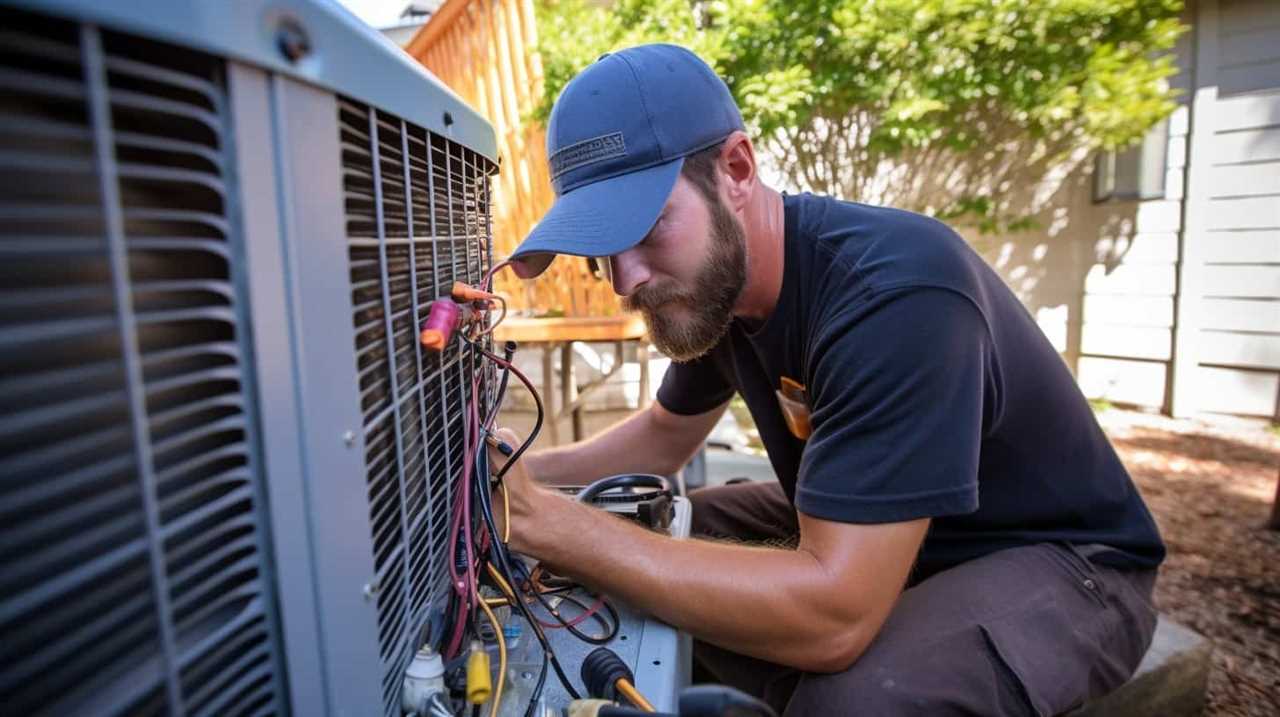
In order to effectively maintain our heat pump, it’s important to understand the various parts that make up the system.
Pump Maintenance Tips
We will cover three key components of a geothermal heat pump system for effective pump maintenance:
Heat Exchangers: These components are responsible for transferring heat between the ground and the heat pump. Regularly inspect and clean the heat exchangers to ensure optimal heat transfer efficiency.
Compressor: The compressor is the heart of the geothermal heat pump system. It compresses the refrigerant and plays a crucial role in heat exchange. Keep the compressor well-maintained by checking for any leaks, ensuring proper refrigerant levels, and lubricating moving parts.
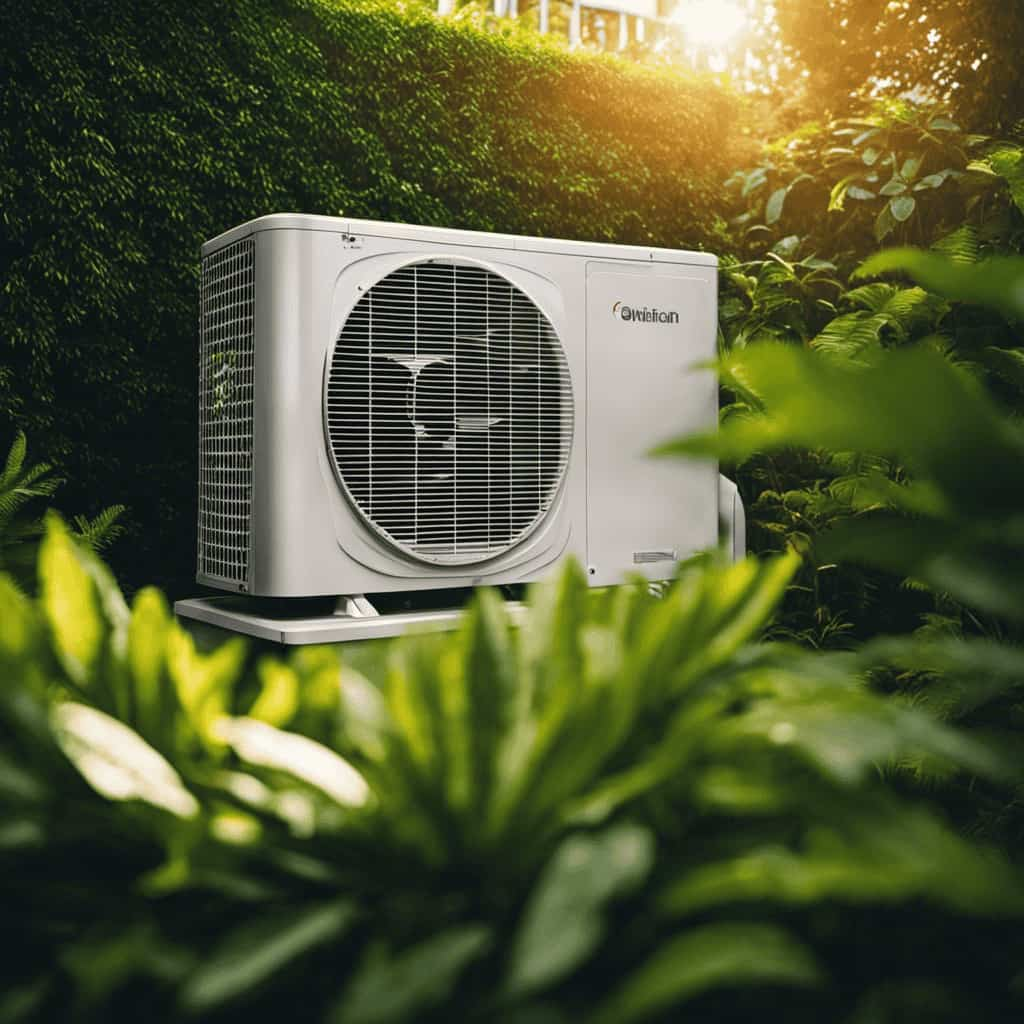
Air Handler: This component distributes the conditioned air throughout the building. Inspect the air handler regularly to ensure proper airflow, clean the filters, and check for any obstructions.
System Component Overview
What are the key components of a geothermal heat pump system?
Let’s take a closer look at the important elements that make up this innovative system.
First, we have the heat pump unit itself, which is responsible for transferring heat between the ground and your home. It consists of a compressor, a heat exchanger, and a refrigerant.

Then, we have the ground loop system, which consists of pipes buried underground to extract or dissipate heat. These pipes can be installed vertically or horizontally, depending on the available space.
Next, we have the ductwork, which distributes the conditioned air throughout your home.
Lastly, we have the thermostat, which allows you to control the temperature and settings of your geothermal heat pump system.
Understanding these key components will help you maintain and troubleshoot your system more effectively.

Importance of Regular Maintenance
Regular maintenance is crucial for ensuring the longevity and efficiency of key components in a geothermal heat pump system. We understand the importance of taking care of your system so that it can continue to provide you with reliable heating and cooling.
Here are three reasons why regular maintenance is essential:
Optimal Performance: Regular maintenance helps keep your geothermal heat pump running at its best. By cleaning and inspecting the components, we can identify and address any issues before they cause major problems.
Energy Efficiency: A well-maintained system operates more efficiently, saving you money on your energy bills. By keeping the components clean and well-tuned, we can ensure that your system is operating at peak performance.

Longevity: Proper maintenance extends the lifespan of your geothermal heat pump system. By addressing any issues early on and keeping the components in good condition, you can avoid costly repairs or premature replacement.
Taking care of your geothermal heat pump system through regular maintenance is essential for its performance, efficiency, and longevity.
Now let’s move on to the next section and learn about cleaning and inspecting the heat exchanger.
Cleaning and Inspecting the Heat Exchanger
Let’s start by thoroughly cleaning and inspecting the heat exchanger to ensure optimal performance and efficiency. This is an essential step in maintaining your geothermal heat pump system.
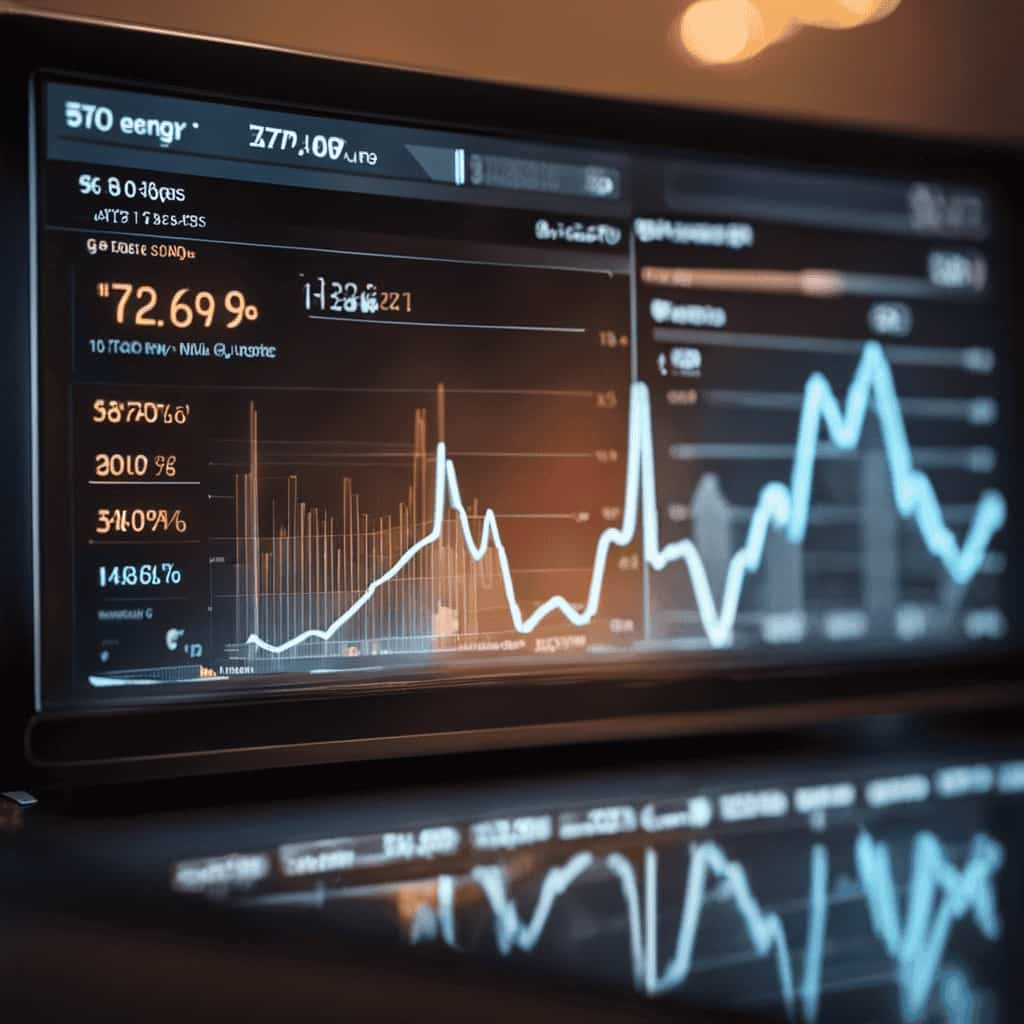
Begin by turning off the power to the unit and disconnecting it from the electrical source. Carefully remove any debris or dirt that may have accumulated on the heat exchanger fins using a soft brush or vacuum. Inspect the exchanger for any signs of damage, such as corrosion or leaks, and make any necessary repairs.
Regularly cleaning and inspecting the heat exchanger won’t only improve the efficiency of your system but also prolong its lifespan.
Now that we’ve taken care of the heat exchanger, let’s move on to properly maintaining the ground loop system.
Properly Maintaining the Ground Loop System
To ensure optimal performance and longevity of our geothermal heat pump system, we need to properly maintain the ground loop system by regularly checking for leaks and replenishing the antifreeze solution. Here are three essential steps to help you maintain your ground loop system:
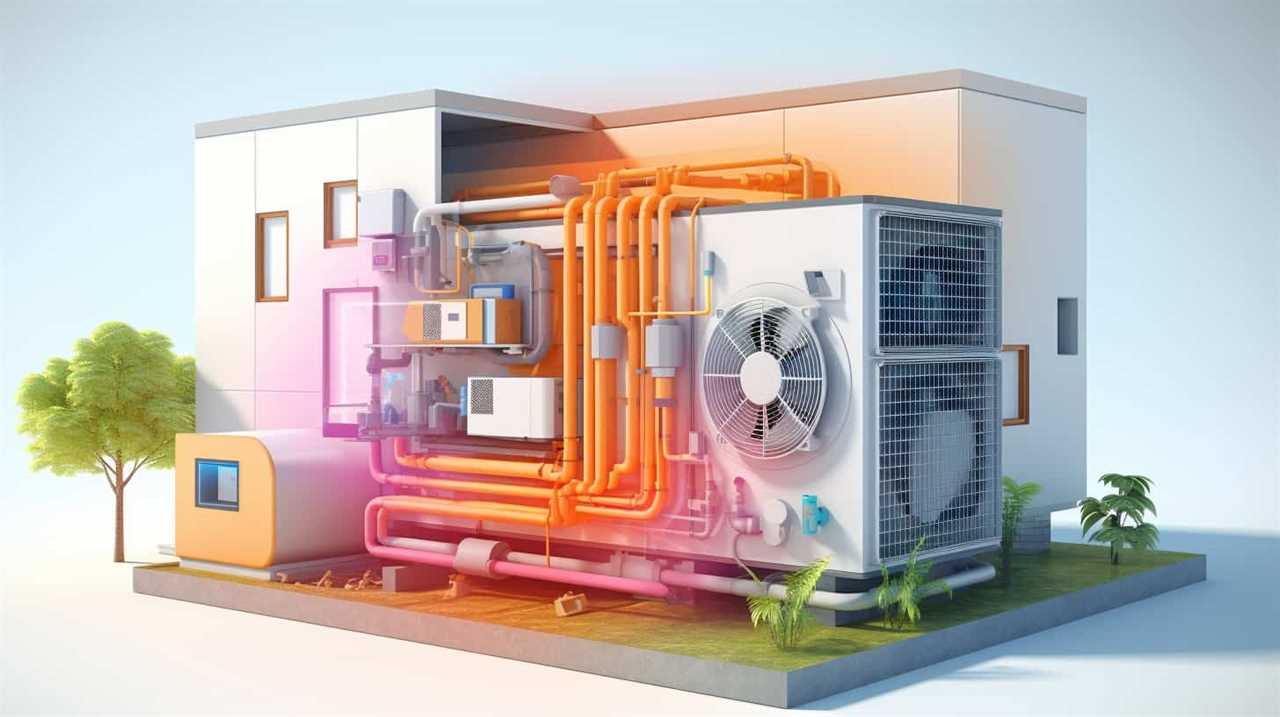
Inspect for leaks: Regularly check the ground loop system for any signs of leakage. Look for wet spots, puddles, or areas with lush vegetation. If you notice any leaks, it’s crucial to address them promptly to prevent any damage to the system.
Replenish the antifreeze solution: Over time, the antifreeze solution in the ground loop system may degrade or become diluted. It’s essential to test the solution’s concentration regularly and add more if needed. This will ensure optimal heat transfer efficiency and protect against freezing during colder months.
Clean the system: Periodically clean the ground loop system to remove any debris or sediment that may have accumulated. This will help maintain proper flow and prevent clogs, ensuring the system operates efficiently.
Checking and Replacing Filters in Geothermal Heat Pumps
We should regularly check and replace the filters in our geothermal heat pumps to ensure optimal performance and prevent any potential damage to the system. Filters play a crucial role in keeping the air clean and free from dust, debris, and other pollutants. Over time, these filters can become clogged and restrict the airflow, leading to decreased efficiency and increased energy consumption. By regularly inspecting and replacing the filters, we can maintain the air quality and extend the lifespan of our geothermal heat pump system.

To help you keep track of when to check and replace your filters, here’s a simple table:
| Filter Type | Frequency of Inspection | Frequency of Replacement |
|---|---|---|
| Air Filter | Every 1-3 months | Every 6-12 months |
| Water Filter | Every 6-12 months | Every 1-2 years |
| Ground Loop Filter | Every 2-3 years | Every 3-5 years |
Maintaining the Air Distribution System
To ensure proper airflow and distribution of heated or cooled air throughout the building, we must regularly maintain and clean the air distribution system. Neglecting this crucial step can lead to reduced efficiency and comfort in your space.
Here are three simple tasks you can perform to keep your air distribution system in optimal condition:
Inspect and clean the air ducts: Over time, dust, dirt, and debris can accumulate in the air ducts, obstructing airflow and decreasing system efficiency. Regularly inspect the ductwork, and if you notice any buildup, clean it using a vacuum cleaner or a soft brush.

Check and adjust the dampers: Dampers help control the airflow in different areas of your building. Make sure they’re properly adjusted to ensure balanced airflow throughout the space. If necessary, consult a professional to help you with this task.
Clean and maintain the registers and grilles: Dust and debris can also accumulate on registers and grilles, obstructing airflow. Regularly clean them by removing the covers and using a brush or cloth to wipe away any buildup.
Tips for Troubleshooting and Common Maintenance Issues in Geothermal Heat Pumps
For troubleshooting and addressing common maintenance issues in geothermal heat pumps, our team recommends starting with a thorough inspection of the system and checking for any visible issues. This includes examining the heat pump unit for leaks, loose connections, or any signs of damage.
Additionally, it’s important to check the air filters and clean or replace them if necessary. Clogged filters can restrict airflow and reduce the efficiency of the system.

Another common issue to look out for is a malfunctioning thermostat. Ensure that the settings are correct and that the thermostat is properly calibrated.
If the heat pump isn’t producing enough heat or cool air, it may be due to a refrigerant leak or a faulty compressor. In such cases, it’s best to contact a professional technician to diagnose and repair the problem.
Regular maintenance, such as cleaning the coils and clearing any debris around the outdoor unit, can also help prevent common issues and ensure optimal performance of the geothermal heat pump system.
Frequently Asked Questions
Can I Install a Geothermal Heat Pump System Myself, or Do I Need to Hire a Professional?
We can definitely install a geothermal heat pump system ourselves, but it’s crucial to mention that hiring a professional is highly recommended. They have the expertise and knowledge to ensure a proper and efficient installation.
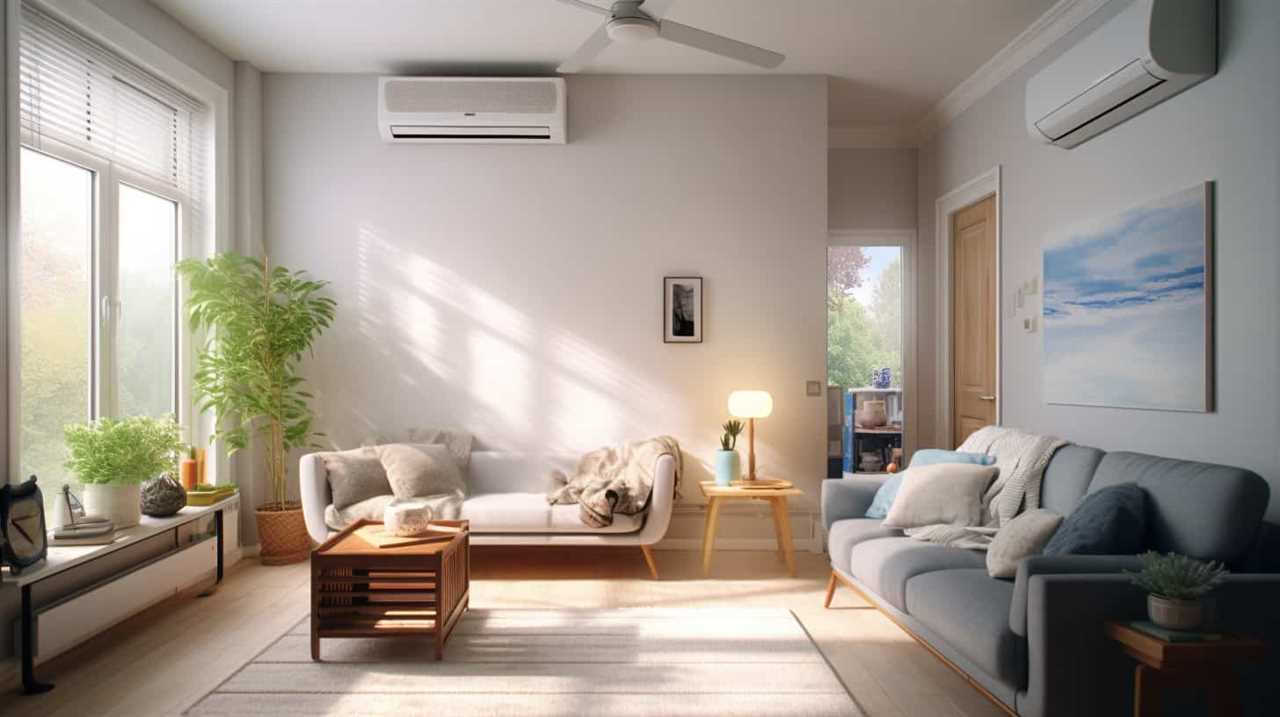
How Often Should I Schedule Maintenance for My Geothermal Heat Pump System?
We should schedule maintenance for our geothermal heat pump system at least once a year. Regular maintenance helps ensure optimal performance and extends the lifespan of the system, saving us money in the long run.
Are There Any Specific Maintenance Tasks That I Can Do Myself, or Should I Always Hire a Professional?
We can definitely do some maintenance tasks ourselves, but it’s always a good idea to hire a professional for certain tasks. Safety should be our priority, so let’s consult a professional when needed.
What Are the Signs That Indicate My Geothermal Heat Pump System May Need Repairs?
When our geothermal heat pump system needs repairs, we notice signs like strange noises, reduced heating/cooling, or frequent cycling. These red flags, like a flickering flame in a dark room, prompt us to seek professional assistance.
How Long Can I Expect My Geothermal Heat Pump System to Last With Regular Maintenance?
With regular maintenance, we can expect our geothermal heat pump system to last for many years. It’s important to follow the proper maintenance guidelines to ensure optimal performance and extend the lifespan of the system.

What Factors Should I Consider When Implementing a Geothermal Heat Pump in a Commercial Setting?
When considering a geothermal heat pump implementation in a commercial setting, several factors should be taken into account. Firstly, the site’s geology and potential access to a heat source, such as a nearby water source or geothermal wells, need to be assessed. Additionally, the size and thermal requirements of the building play a crucial role in determining the appropriate system capacity. Adequate insulation, compatible distribution systems, and operational feasibility are also vital considerations in mastering geothermal heat pump implementation.
Conclusion
In conclusion, maintaining your geothermal heat pump is like tending to a well-oiled machine. Just as a gentle touch can keep the gears turning smoothly, regular maintenance ensures optimal performance and energy efficiency.
By cleaning the heat exchanger, maintaining the ground loop system, checking filters, and tending to the air distribution system, you can keep your geothermal heat pump humming like a contented hive of bees.
So don’t let your system buzz off into disrepair – give it the TLC it deserves!



